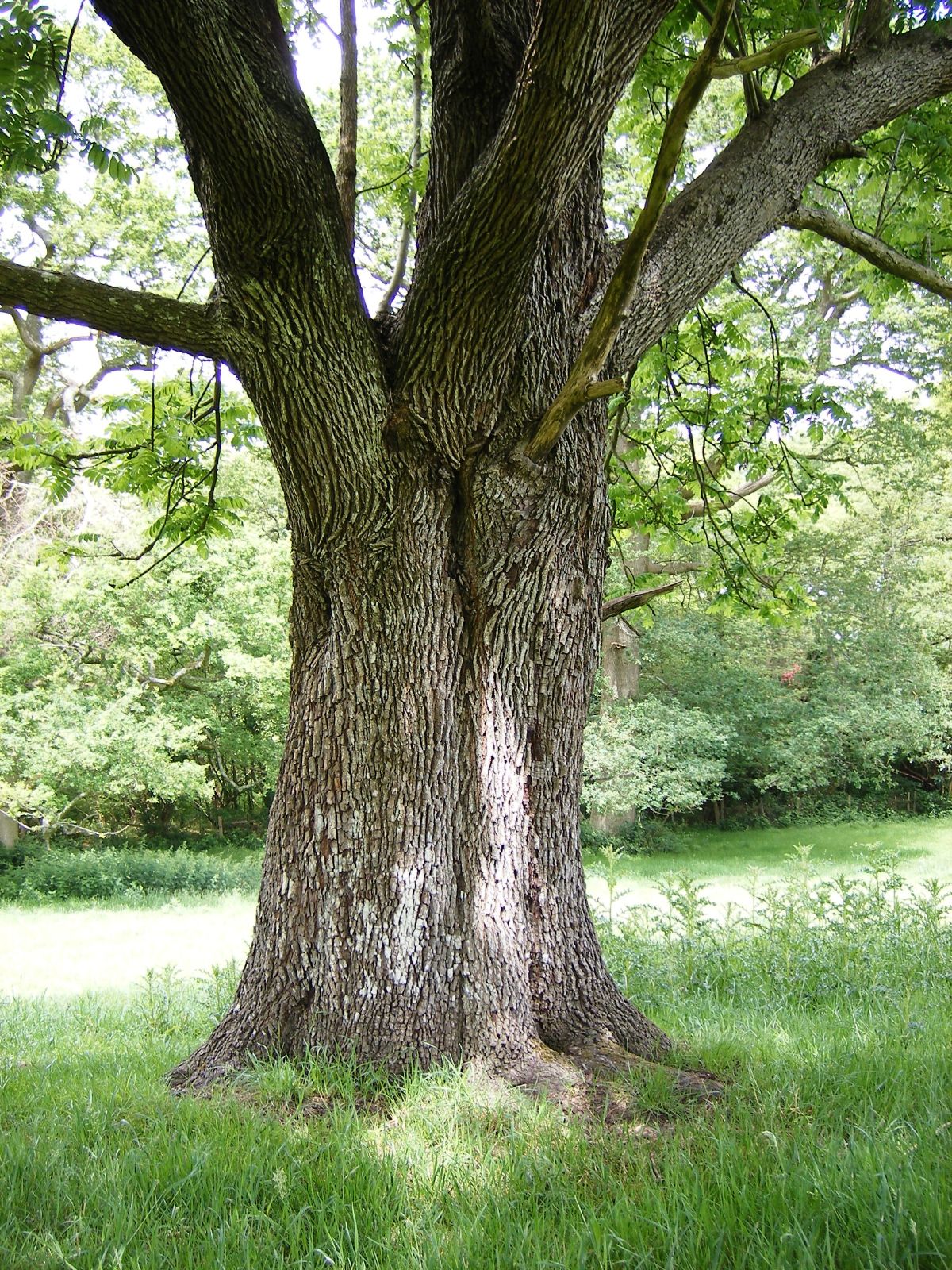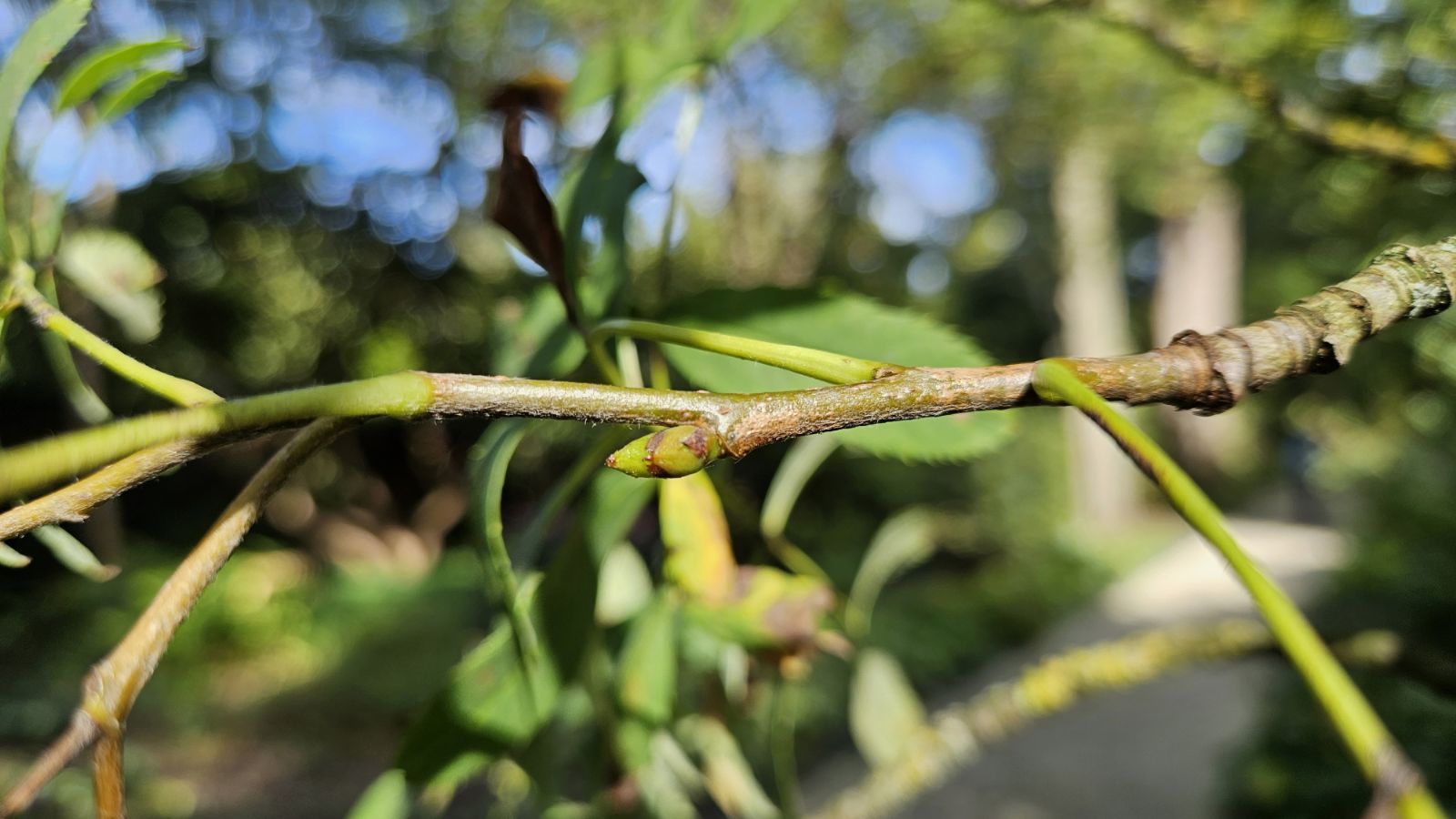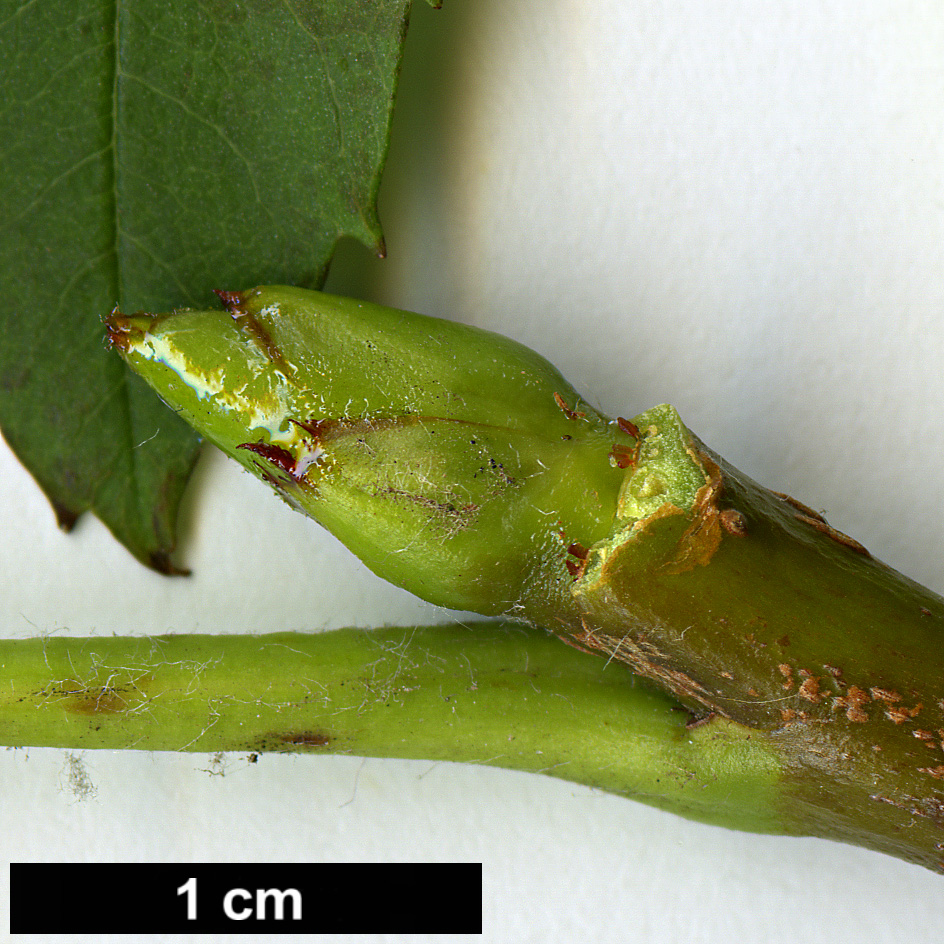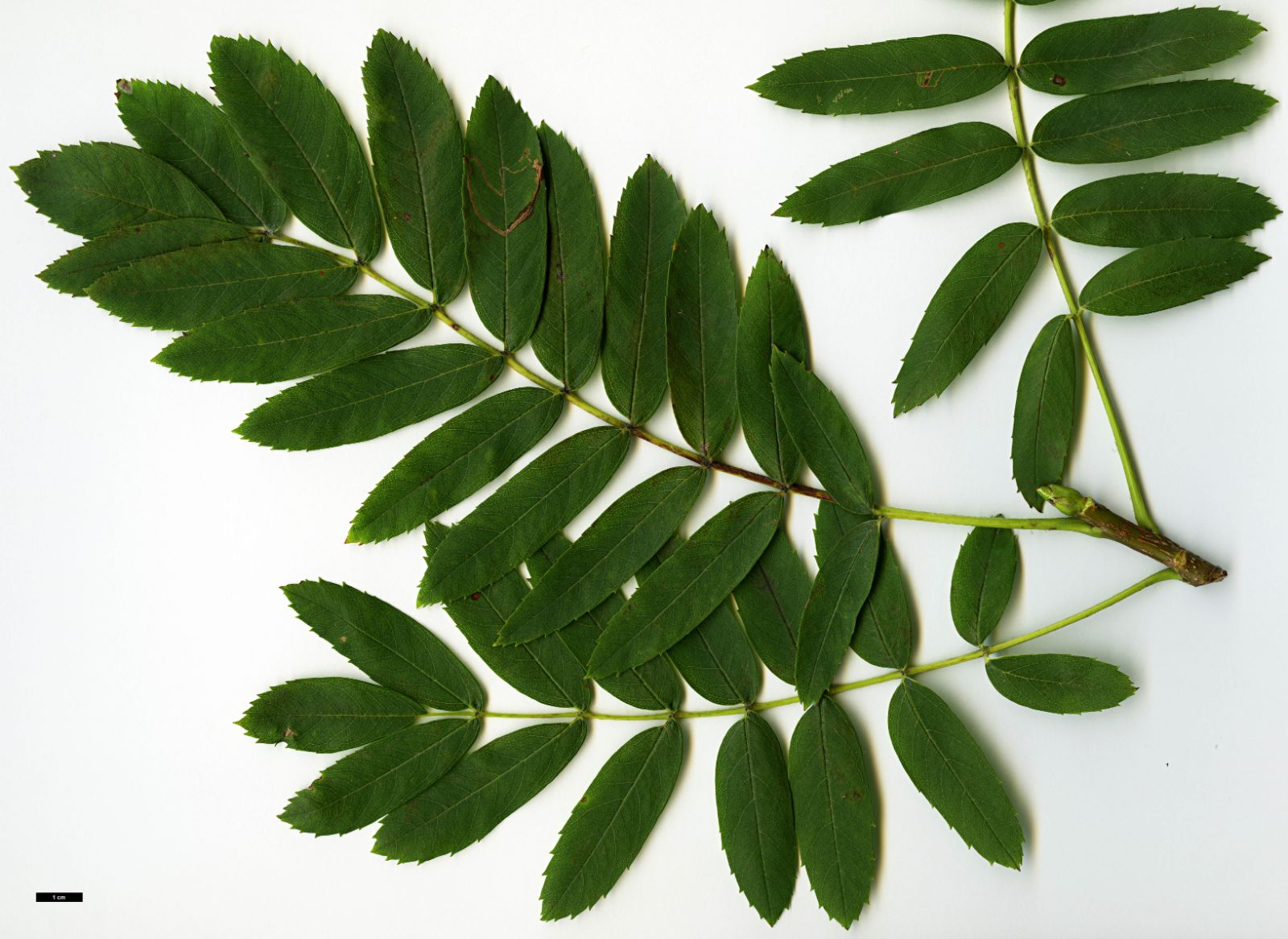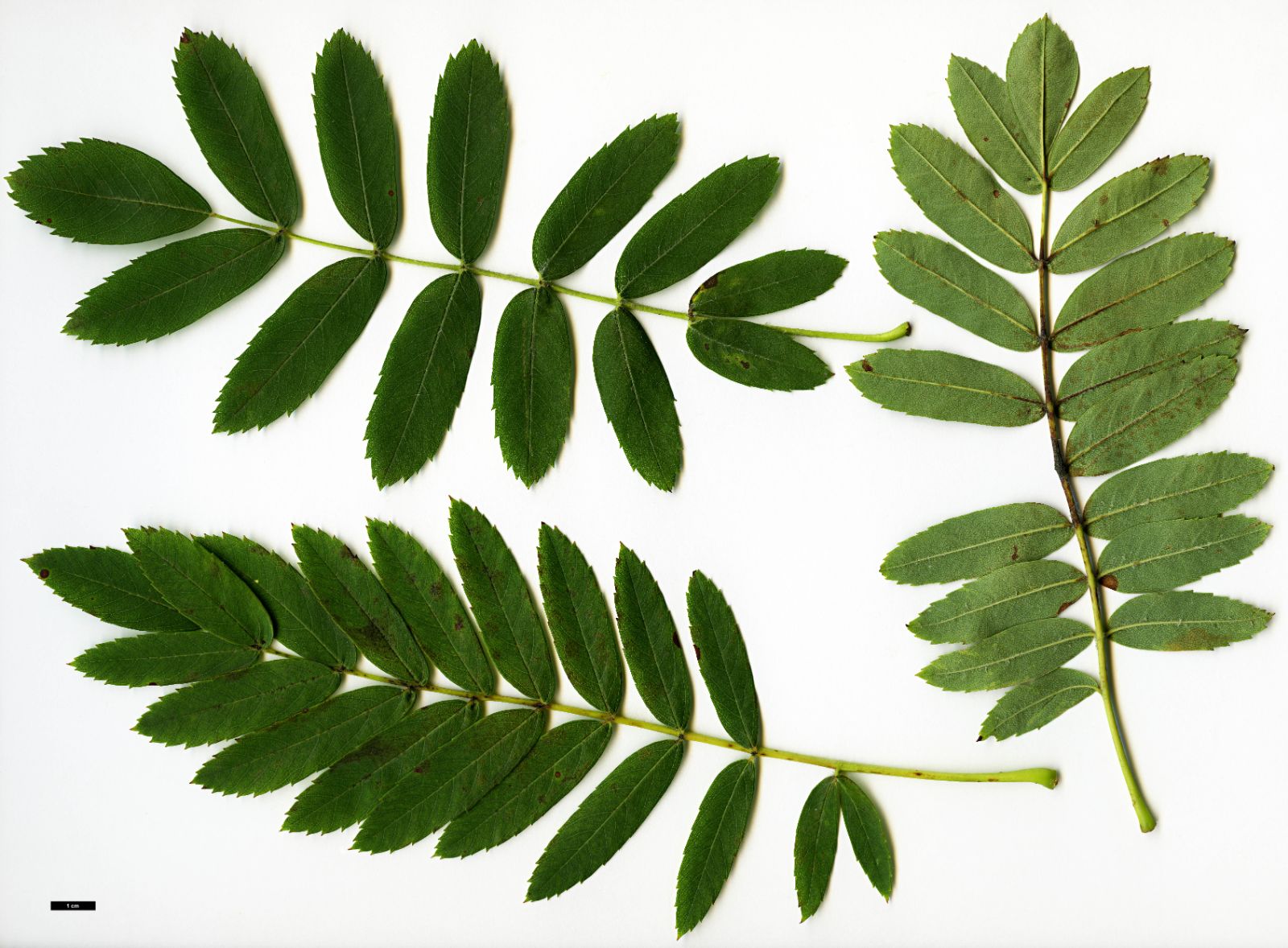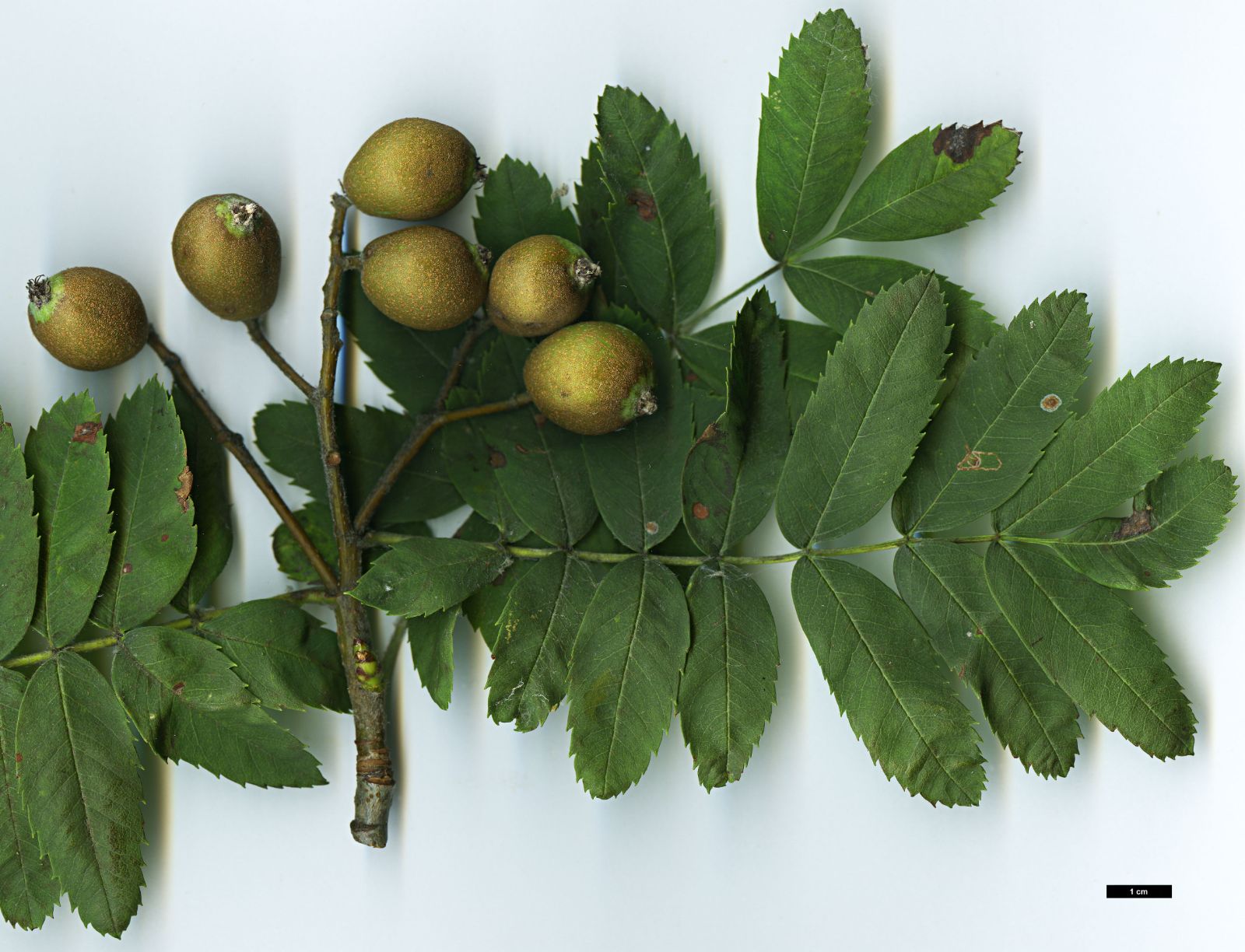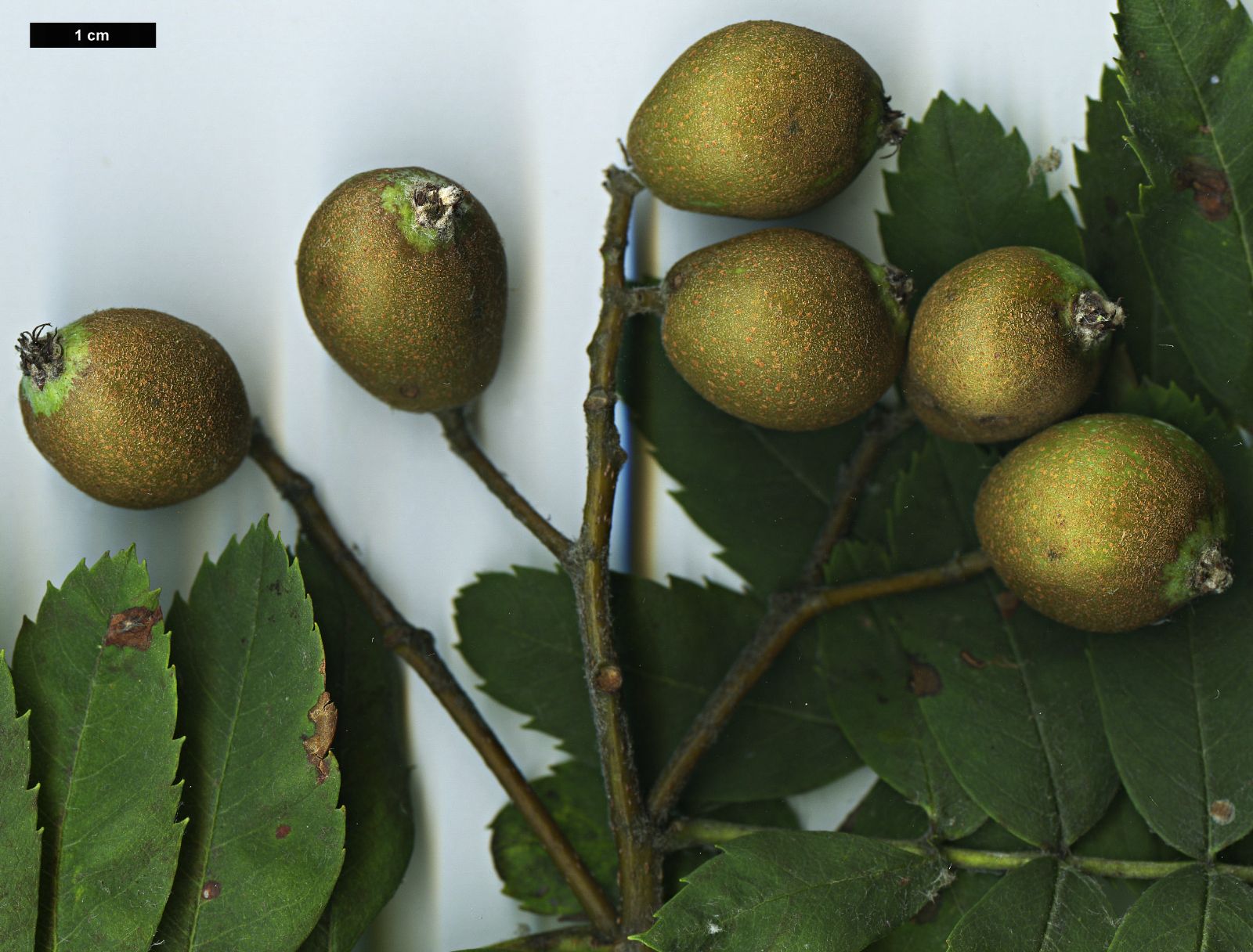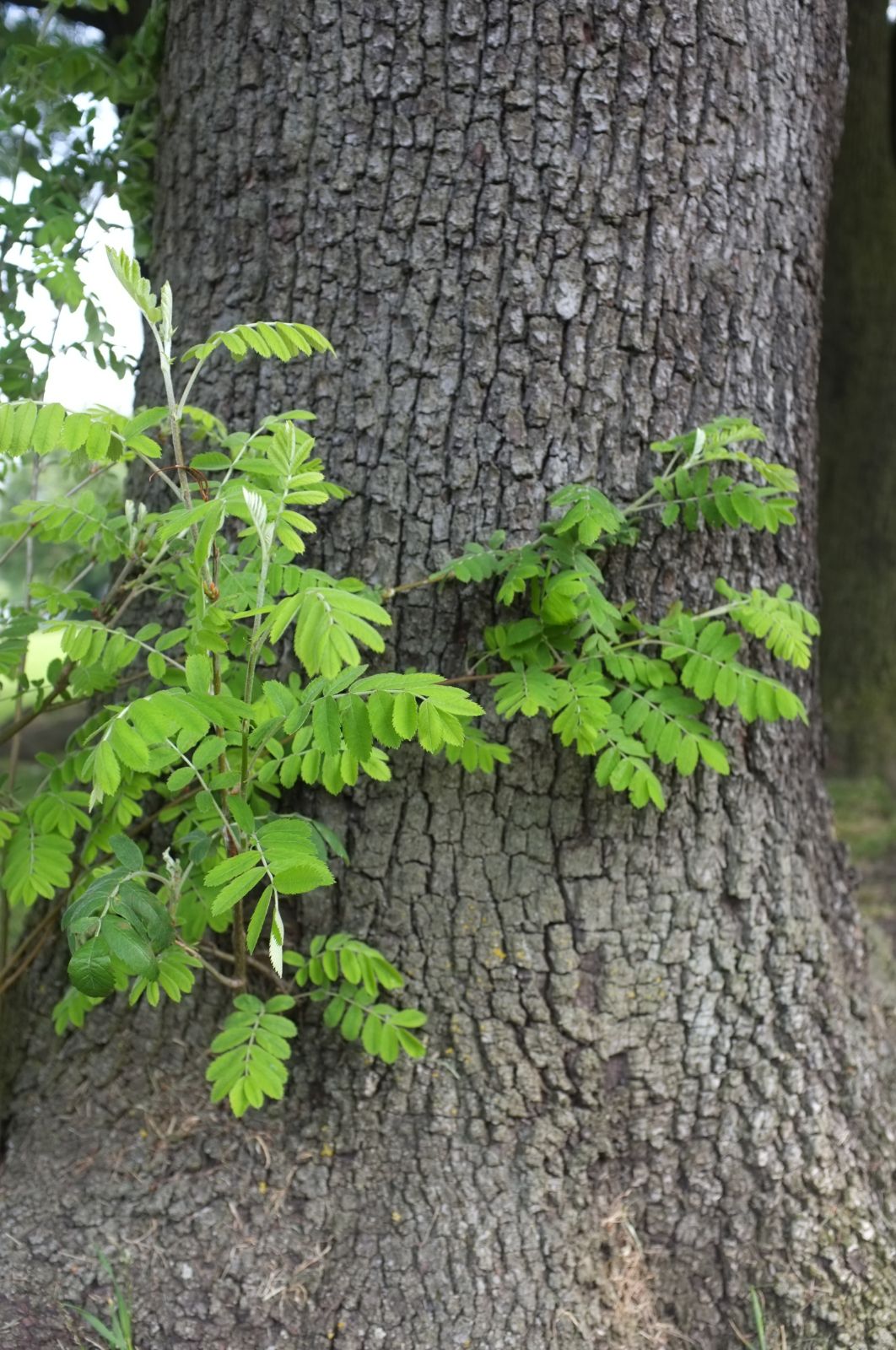Cormus domestica
Credits
Article from Bean's Trees and Shrubs Hardy in the British Isles
Recommended citation
'Cormus domestica' from the website Trees and Shrubs Online (treesandshrubsonline.
Other taxa in genus
Editorial Note
The text below is that of Bean (Bean 1981) who discussed this taxon under the name Sorbus domestica. We have created this hybrid article – Bean’s text under the correct modern name, with appropriate synonymy – whilst we await sponsorship to enable a full revision of this genus to be written. We are re-organising the Sorbus sensu lato articles in this way to enable a new revision of Sorbus sensu stricto to commence in 2023, and to bring the nomenclature of this complex group of plants up to date in line with modern treatments.
TC, August 2023.
A deciduous tree, usually 30 to 50 ft (occasionally 60 to 70 ft high); trunk covered with a scaly, rough bark; shoots furnished with loose, silky hairs when quite young, which soon fall away; winter buds glutinous and shining. Leaves pinnate, 5 to 9 in. long, composed of thirteen to twenty-one leaflets, which are narrowly oblong, usually pointed, but sometimes rounded at the tip, 11⁄4 to 21⁄2 in. long, 3⁄8 to 1⁄2 in. wide, margin set with slender teeth except towards the base, which is entire, glabrous above, more or less downy beneath, but becoming glabrous or nearly so by autumn. Flowers white, about 1⁄2 in. across, produced in May in panicles at the end of short branches and from the leaf-axils, the whole forming a rounded or rather pyramidal cluster 21⁄2 to 4 in. wide. Receptacle and flower-stalks downy. Styles five. Fruits pear-shaped or apple-shaped, 1 to 11⁄4 in. long, green or brown tinged with red on the sunny side.
Native of southern and parts of eastern Europe, thence eastward to the northern Caucasus; also of North Africa. As an ornamental tree this is perhaps scarcely equal to its ally, the mountain ash, but is well worth growing for the beauty of its foliage, and for its flowers, which are larger than usual in Sorbus. It also attains to greater dimensions than any of its immediate allies.
The most famous of all British service trees was one which grew for some hundreds of years in Wyre Forest, in Worcestershire. The story of this tree was told by Robert Woodward in the Gardeners’ Chronicle of 13 April 1907. It was first noted by one Edmund Pitt, in 1678, and was mentioned and discussed by various writers up to 1862, when it was set on fire and killed by a vagrant. This tree was considered to be an old one by Pitt in 1678, and there appears to be little doubt that the species lives for five or six hundred years. The Wyre Forest tree is the only one which gives the species any claim to rank as a British tree, for it has never been found truly wild elsewhere, and it is now generally accepted that even this tree was planted.
The fruit of the service tree is sometimes eaten in a state of incipient decay, especially in France, although Loudon observes that it is not highly prized, and is more frequently eaten by the poor than by the rich. On the other hand Mr E. Burrell, then gardener to H.R.H. the Duchess of Albany at Claremont, in a letter dated 11th Nov. 1883, observes that ‘we are sending good fruits of the pear-shaped service for dessert at the present time.’ This Claremont tree was blown down in 1902, and was then close upon 70 ft high. The timber is of fine quality, being very hard and heavy, but too scarce to count for much.
The form with pear-shaped fruit, which appears to make the finest tree, is distinguished as f. pyrifera (Hayne) Rehd.; the other, with apple-shaped fruit, as f. pomifera (Hayne) Rehd. Both are easily distinguished at any time from the mountain ash by the rough scaling bark; in autumn by the big fruits; and in winter by the glutinous, not very downy buds. The service tree should be raised from seed.
Early in the last century Lord Mountnorris of Arley Castle, Worcestershire, raised grafts of the Wyre Forest tree, and there is still a tree there about 65 ft high. The most famous examples of the service tree grow in the Oxford Botanic Garden, and are believed to have been planted in the time of Dr Sibthorp, Professor of Botany at Oxford 1784–95. They measure 75 × 71⁄4 ft (maliform) and 54 × 61⁄2 ft (pyriform) (1970). Other large examples measured recently are: Park Place, Henley, 65 × 8 ft (1969), and Colesbourne, Glos., pl. c. 1905, 60 × 6 ft (1975).
From the Supplement (Vol. V)
specimens: Kew, near Main Gate, 50 × 6 ft, maliform (1985); Kensington Gardens, London, 70 × 81⁄4 ft (1981); Wotton House, Surrey, 56 × 81⁄4 ft, pyriform (1983); Dryads Hall, Loughton, Essex, 72 × 61⁄2 ft (1979); Oxford Botanic Garden, 50 × 73⁄4 ft, maliform and 52 × 63⁄4 ft, pyriform (1983); Highclere Castle, Hants, 58 × 73⁄4 ft (1978); Arley Castle, Worcs., (see page 423, bottom), 65 × 11 ft (1975); Powis Castle, Powys, Garden, 62 × 5 ft (1981); Edinburgh Botanic Garden, 70 × 61⁄2 ft (1985) and, pl. 1892, 56 × 41⁄2 ft, the latter pyriform (1985).

